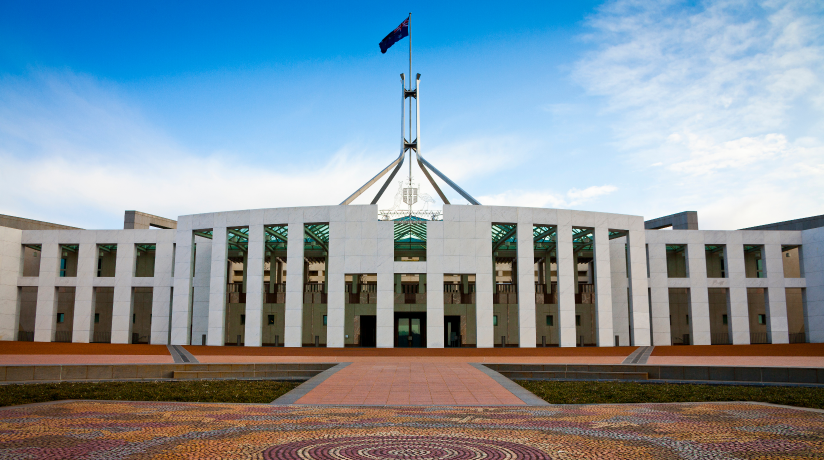MBV welcomes some measures announced in the 2022/23 Federal Budget released last night. Jim Chalmer’s delivered his first budget, which focuses on housing supply and affordability, the cost of living, small businesses and training, skills and apprentices.
Some of what has been announced on budget night represent the activation of election commitments from earlier in the year. However, there are also some significant new announcements.
Below is a summary of the key Federal Budget matters relating to our industry.
Economic backdrop
Economic conditions have largely become more difficult since the March 2022 federal budget, delivered by the previous government before the election.
The October 2022 federal budget predicts that:
- Australia’s economy will continue to grow throughout the period up to 2025-26.
- The pace of economic growth will slow to 1.5 per cent during 2023-24 before picking up again.
- Unemployment is likely to increase and persist at a 4.5 per cent rate throughout 2023-24 and 2024-25. This is still relatively low by historical standards. The latest results indicate that Australia’s unemployment rate was 3.5 per cent in September 2022.
- The inflation rate is expected to reach 7.75 per cent in late 2022 before starting to decline. Treasury sees the inflation rate returning to the 2 to 3 per cent range by 2024-25, within the RBA’s target range.
- In an optimistic projection, Treasury envisages that residential building activity will dip only slightly over the next two years.
The table below provides full details of the Treasury’s economic forecasts over the budgetary horizon to 2025-26.
Department of Treasury Economic Projections to 2025-26 (October 2022 federal budget) | |||||
Financial Year | 2021-22 | 2022-23 | 2023-24 | 2024-25 | 2025-26 |
GDP growth (%) | +3.9% | +3.3.% | +1.5% | +2.3% | +2.5% |
Employment growth (%) | +3.3% | +1.8% | +0.8% | +1.0% | +1.3% |
Unemployment rate (%) | 3.8% | 3.8% | 4.5% | 4.5% | 4.3% |
Inflation (%) | +6.1% | +5.8% | +3.5% | +2.5% | +2.5% |
Wage growth (%) | +2.6% | +3.8% | +3.8% | +3.3% | +3.5% |
Residential building (%) | +2.6% | -2.0% | -1.0% |
|
|
Net Overseas Migration (NOM) | +150,000 | +235,000 | +235,000 |
|
|
Source: Department of Treasury – Budget Paper #1 – October 2022 | |||||
Budgetary outlook and strategy
As economic activity slows over the next two years, the federal government budget deficit is expected to widen and reach 2.0 per cent of GDP during 2024-25. However, the reversal to more favourable economic conditions will bring about a smaller deficit as we move to the middle of the decade.
The persistence of budget deficits over the medium term means that the magnitude of net government debt will continue climbing. It is likely to increase from 22.5 per cent in 2021-22 to 28.5 per cent by the end of the budget forecast horizon in 2025-26. However, this is still a relatively low debt burden by comparison with most advanced economies.
Department of Treasury Budgetary Projections to 2025-26 (October 2022 federal budget) | |||||
Financial Year | 2021-22 | 2022-23 | 2023-24 | 2024-25 | 2025-26 |
Underlying cash balance ($billions) | -$32.0 | -$36.9 | -$44.0 | -$51.3 | -$49.6 |
Relative to GDP (%) | -1.4% | -1.5% | -1.8% | -2.0% | -1.8% |
Net Debt ($billions) | $515.6 | $572.2 | $634.1 | $702.8 | $766.8 |
Relative to GDP (%) | 22.5% | 23.0% | 25.8% | 27.4% | 28.5% |
Source: Department of Treasury – Budget Paper #1 – October 2022 | |||||
Key initiatives in October 2022 federal budget
Housing
Housing initiatives are a significant pillar of the October 2022 federal budget.
The National Housing Accord
One of the biggest takeaways from the Budget speech is the announcement of a new national Housing Accord. The Housing Accord was struck between all levels of government, investors, and industry. The Accord’s primary goal is to create 1 million new homes over the five-year period starting in 2024.
Under the new national Housing Accord, the supply of new homes will be boosted in several ways.
- At the outset, $350 million will be provided by the federal government over five years to deliver 10,000 affordable dwellings of very high energy efficiency (at least a 7-Star rating).
- The delivery of an additional 10,000 homes is to be sponsored by the states and territories through in-kind or financial contributions.
- Resources will be provided to narrow the gap between market rents and subsidised rents to expand the breadth of commercially viable new home-building projects.
- By signing up to the Accord, state, territory, and local governments have committed to expediting zoning, planning and land release to lower the hurdles in the way of new housing supply.
- The Accord seeks to capitalise more fully on the potential for superannuation funds and other institutional investors to finance greater volumes of new housing supply.
Apart from the new Housing Accord, the October 2022 federal budget also makes provisions for the following:
- The Housing Australia Future Fund aims to build 30,000 new social and affordable homes in its first five years.
- Expanding the remit of the National Housing Infrastructure Facility to support the creation of an additional 5,500 new homes.
- The Help to Buy Scheme allows up to 40,000 people to become homeowners more easily with smaller deposits and a lighter mortgage burden.
- In addition, the Regional First Home Buyer Guarantee seeks to support 10,000 new homeowners annually.
- More attractive incentives for older homeowners to downsize and free up existing dwelling stock for larger households by extending from 12 to 24 months the exemption of home sale proceeds from pension asset testing. Access to downsizer superannuation contributions will also be expanded for those aged 55 to 59.
- Funding of $15.2 million to establish the new National Housing Supply & Affordability Council.
Small business
The government has restated its commitment to its Better Deal for Small Business, which includes proposals to strengthen unfair contract term protections. The budget also allows for the following:
- New energy efficiency grants will be provided for small businesses totalling $62.6 million. These will allow small businesses to invest in cost-saving energy-efficient upgrades to reduce their power bills.
- Funding of $15.1 million will also be made available to expand tailored mental health and financial counselling programs for small businesses. This measure will redirect partial funding from the Australian Small Business and Family Enterprise Ombudsman component of the 2022-23 March Budget measure titled Small Business Support Package.
Industrial and workplace relations
MBV is disappointed to announce that:
- the federal budget provides for the abolition of the Australian Building & Construction Commission (ABCC), with some of its functions to be transferred to the Fair Work Ombudsman (FWO).
- Resourcing is also provided for the abolition of the Registered Organisations Commission (ROC) and the transfer of its resources to the Fair Work Commission (FWC).
Training, skills and apprentices
Some of the budget’s measures to address cost-of-living difficulties will likely support greater labour availability. Cheaper childcare and changes to allow older Australians to keep more of their pensions if they decide to work are examples of this.
- The permanent migration program will be increased to 195,000 places in 2022-23. It had previously stood at 160,000. More than 90 per cent of places will be for skilled migrants, with one quarter targeted to regional Australia. To address the visa backlog, funding is also committed to bringing on additional processing staff.
- Disappointingly, apprentice wage subsidies were not increased despite advocacy from MBA, MBV, ACCI and many others. Subsidies will remain at 10% in year 1, 10% in year 2 and 5% in year 3.
- A one-year National Skills Agreement will start at the beginning of the 2023 calendar year to deliver 180,000 fee-free TAFE and VET places. This includes 60,000 additional places and lowering fees for 120,000 existing students. Governments are negotiating a longer-term National Skills Agreement that will include a further 300,000 fee-free places from 2024.
- The government will provide $485.5 million over two years to fund an additional 20,000 university places for people from under-represented backgrounds to study university courses in areas of skills shortage, including engineering.
- The Australians Skills Guarantee will ensure that at least one in 10 workers on major Commonwealth-funded projects is an apprentice, trainee or paid cadet. Targets for participation by women are also likely to be included once its design has been finalised.
- The National Energy Skills Program will support the development of fit-for-purpose training pathways for clean energy industry jobs and provide mentoring for new energy apprentices. The Program will fund 10,000 New Energy Apprentices, with eligible apprentices able to claim up to $10,000 in support payments over the duration of their apprenticeship.
Supply of building materials
The federal budget makes several actions of note to support the greater supply of building materials. This includes:
- The extension of import duties on goods from Russia and Belarus until at least 24th October 2023. Russia and Belarus are major exporters of wood and timber products. An additional tariff of 35 per cent has been applied to their exports since April 2022.
- Increased penalties payable to the ACCC under the More Competition, Better Prices campaign.
- A better plan for forestry and forestry products.
- Supporting Australian Industry.
Infrastructure
Over the next decade, the federal government has pledged to sustain a pipeline of transport infrastructure worth $120 billion. Victoria will receive the following:
- $2.2 billion investment in the Suburban Rail Loop East over the next five years
- $125 million for the Barwon Heads Road Upgrade – Stage 2.
Cost of living relief
Australia’s inflation rate is anticipated by Treasury to peak at 7.75 per cent towards the end of 2022. With inflation being such a source of pressure for households and businesses, the federal budget includes a five-point plan for cost-of-relief.
The $7.5 billion package involves:
1. Cheaper childcare
2. Expanding Paid Parental Leave
3. Cheaper medicines
4. More affordable housing
5. Measures to boost wages growth
Energy
The federal budget provides resources for establishing a $20 billion fund for energy transmission. Funding is also being made available for the government’s Powering Australia Plan. This plan involves:
- cutting taxes on electric cars
- building a national electric vehicle charging network and hydrogen refuelling stations across the roads network
- making solar battery storage available for up to 100,000 homes
- steps to ensure that renters and apartment owners can benefit from cheaper energy too.
Further reading:
Budget October 2022-23 - Improving Housing Supply and Affordability
Budget October 2022-23 - Skills and training
Budget October 2022-23 - Budget at a Glance






